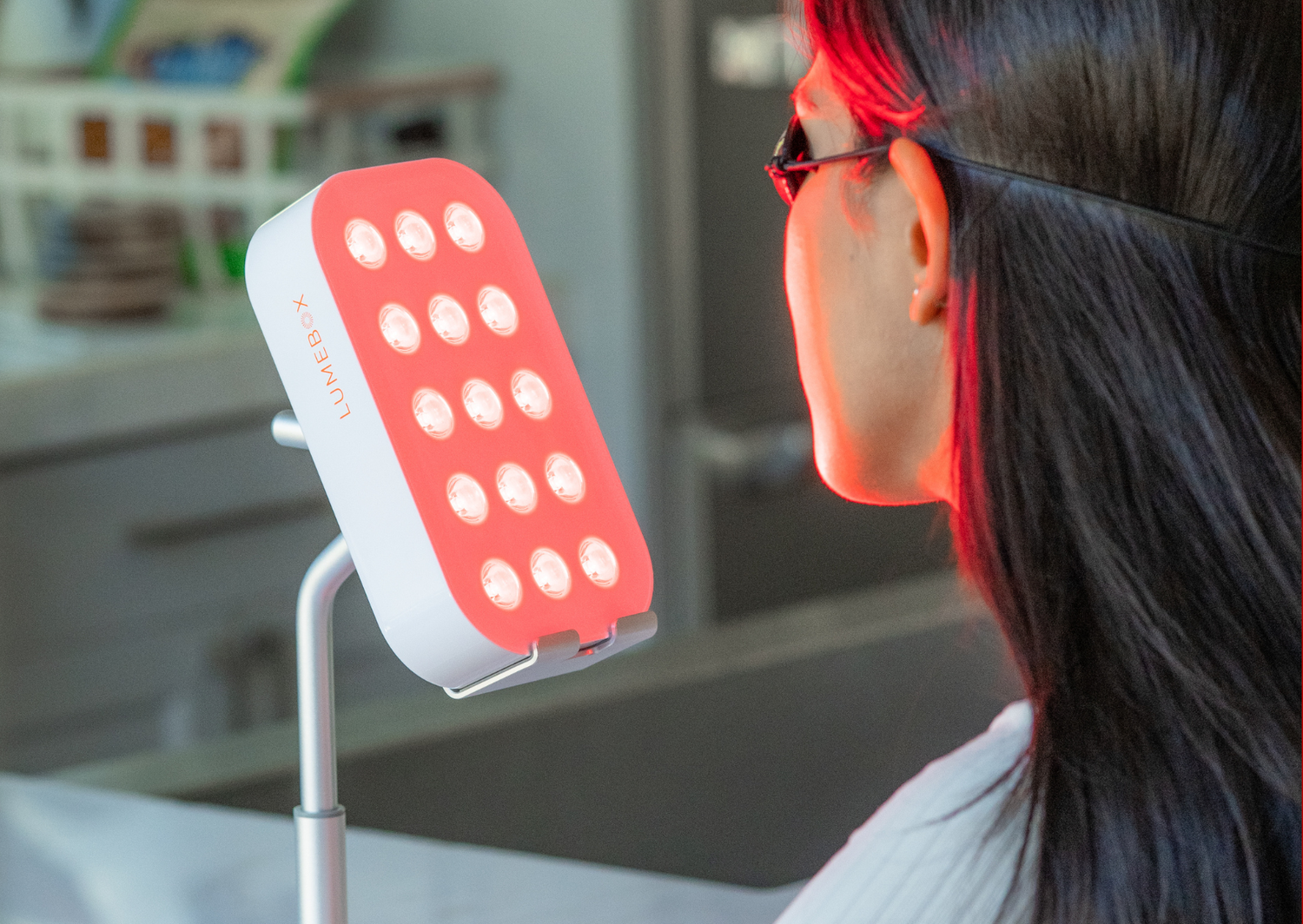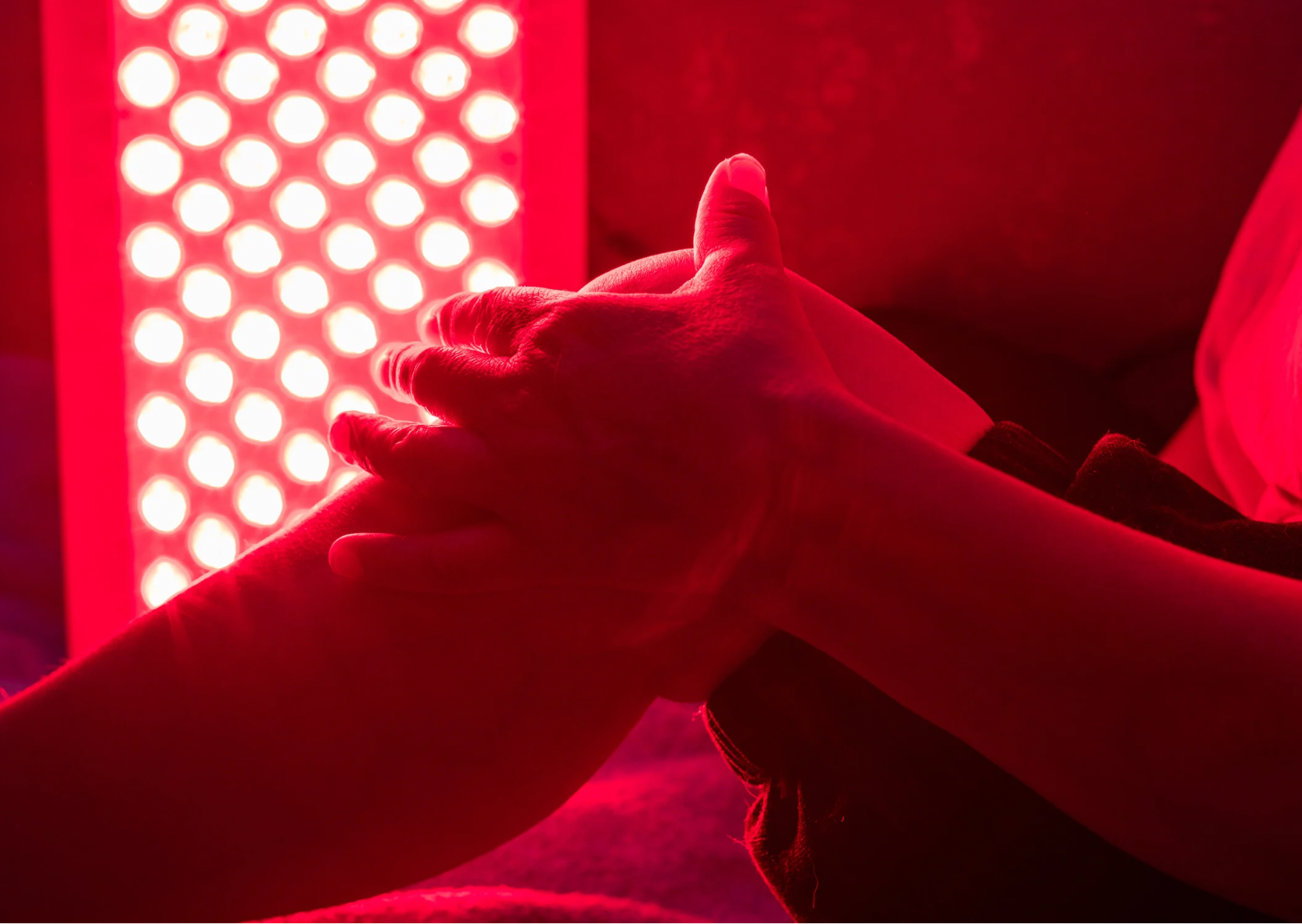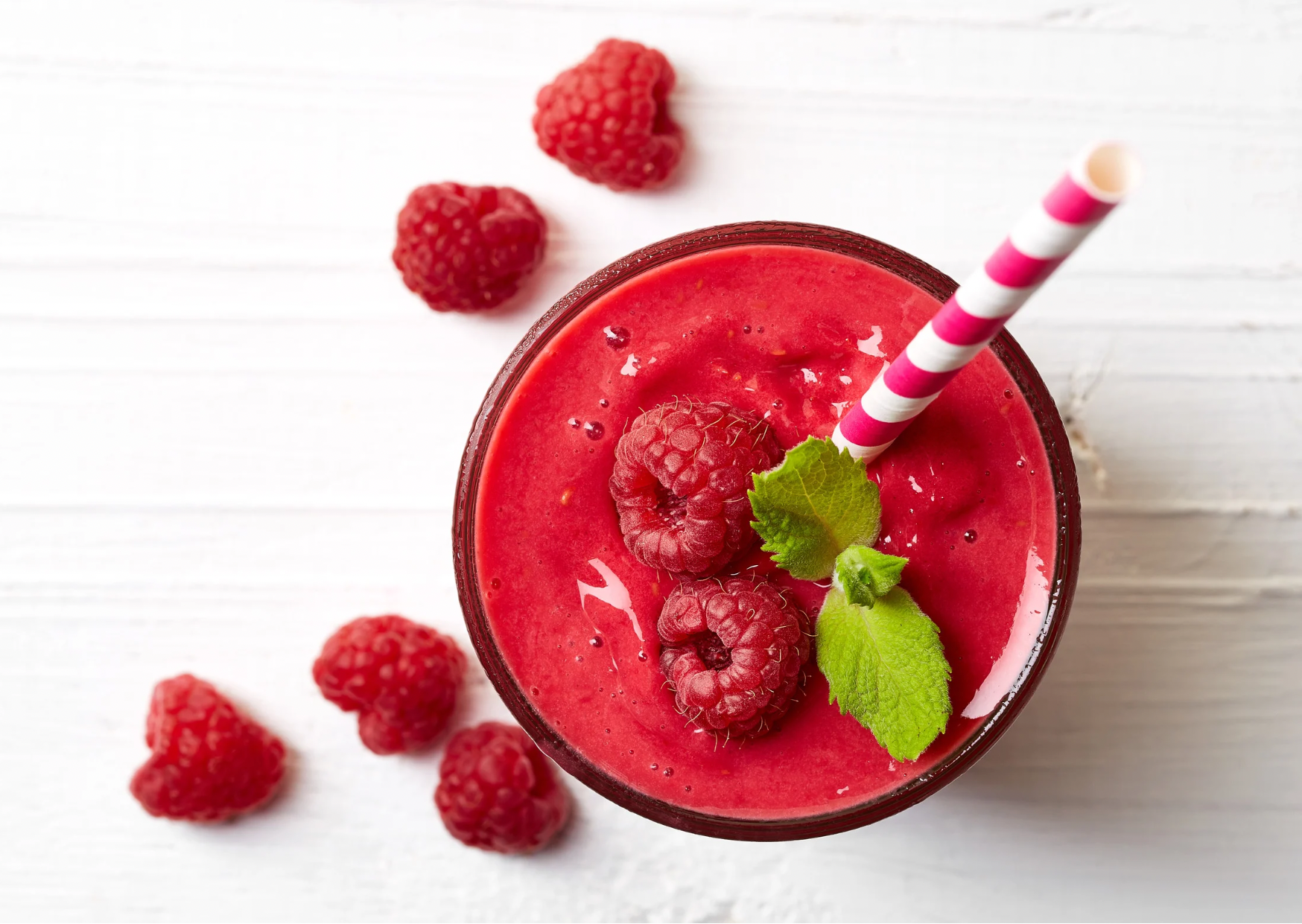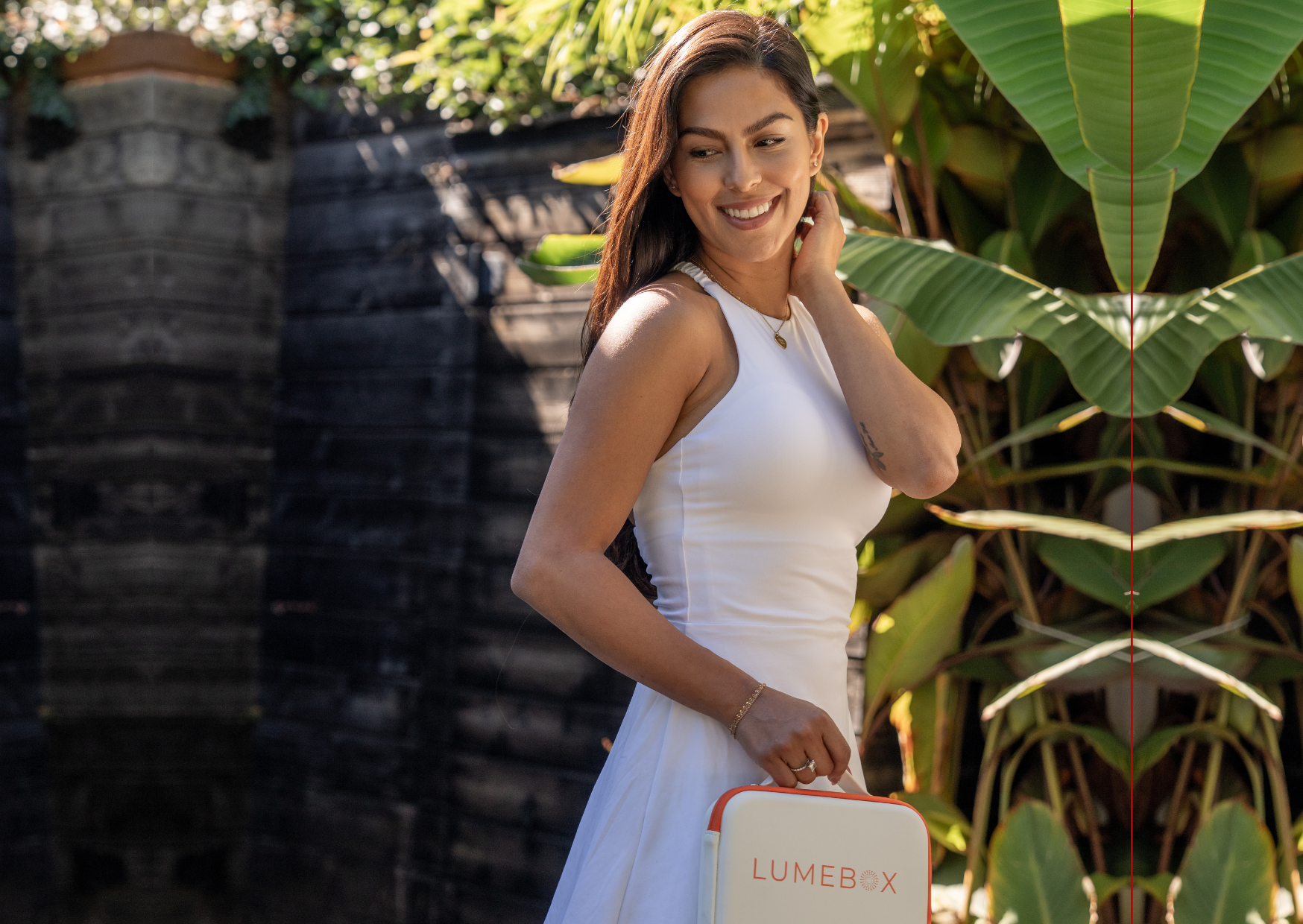Common Struggles With Acne (And Pimples Even When We Get Older)
"Oh no, not another one!" The all-too-familiar sigh that escapes when you catch a glimpse of a tiny red bump emerging in the most predictable, or occasionally unexpected, place on your face. We've all been there – and the feelings only intensify when pimples unite to create a full-blown breakout. Sometimes it's easy to identify the triggers, like the monthly hormonal fluctuations or that tempting sugary treat you couldn't resist. But at other times, it can feel like a mystery.
We’ve been told that pimples appear during puberty, so when they persist into our late 20s, 30s, 40s, and even through menopause, the ongoing challenge of managing skin health can understandably become a source of frustration.
In fact, acne persists beyond the age of 25 years in 3% of men and 12% of women [1].
So if you’ve had, or are still having, your confidence knocked by pimples, breakouts, or acne, you’re not alone.
How Do Pimples Form?
Pimples most often take the form of a raised red spot with a white center, but whiteheads, blackheads, papules (small, pink, tender bumps) pustules (yellow pus-filled lesions), or nodules (larger, painful solid lesions lodged deep within the skin) might also sound familiar.
3 key factors underlie pimple formation:
- Excess oil produced in the pore. This is under the control of our sex hormones and a high blood sugar can also contribute.
- Dead skin cells that build up in the pore and mix in with the oil to form a plug that blocks the pore.
- Bacteria growth in the pore.
Once the follicle becomes blocked, it can get inflamed or infected with bacteria, producing cyst-like lumps that can be painful to the touch.
And they’re not just limited to your face - pimples find their way to the neck, chest, and back too when there’s a clogging of pores. Longer-term acne is often triggered by hormones or inflammation, and there's a nifty little bacteria called Propionibacterium acnes [2] that grows in the mixture of oil and dead cells causing further inflammation in the clogged pores. With acne, redness, pimples, and scars after-the-fact are common.
What’s The Hype Around Light? How Does That Affect Acne?
There are many different types of light. Some are helpful for acne BUT come with significant side effects.
UV: Ultraviolet light’s natural properties greatly benefit human health by helping the body make vitamin D [3] and produce endorphins in the skin [4, 5], both which have benefits extending beyond skin health. In terms of skin treatment, UV light (usually 340–400 nm) has been used in the past to help clear up acne, but today, doctors don't use UV for this purpose as it may trigger and worsen acne, as well as induce an inflammatory response [6]. Overexposure to UV (or sunlight) can also cause sunburn, accelerate aging, and possibly lead to skin cancer [7].
UV treatment is usually now limited to skin conditions that are caused by an overreaction of the immune system such as psoriasis (itchy dryness) and eczema (itchy inflammation).
Blue: Instead, there’s been a movement towards certain wavelengths of blue or red light.
Blue light has proven beneficial for acne [8, 9, 10] by calming inflammation of the skin [11] and killing acne-causing bacteria [12] without damaging the skin in the same way that UV does.
However, overuse may lead to photoaging [13, 14], and the blue light itself has been shown to impact our sleep-wake cycles [15], especially if we’re using an at-home treatment before bed. So we are personally not a huge fan..
Luckily, there are wavelengths that help ease the appearance of acne with its anti-inflammatory properties [16]...
This wavelength is more commonly known as red light!
Red Light Therapy (RLT) is not just an emerging trend on TikTok, it's actually being progressively backed by science, and the good news is, being devoid of UV, there is very little in the way of side effects that we know of so far.
How Does Red Light Help With Managing Breakouts?
Since acne has been defined as a “chronic inflammatory disease resulting from increased sebum production, inflammation, and bacterial colonization of hair follicles” [17], it's pretty handy that red light may…
- Decrease inflammation, [18, 19]
- Reduce redness, [20]
- Aid the rejuvenation of healthy tissue, [21, 22, 23]
- And, not to mention, support collagen [24] to help the appearance of scars!
Want to see the studies?
Here’s the science, observing the effects on humans:
A randomized, single-blinded, split face clinical trial [25] assessed the effect of a portable red LED device (635 -670 nm, 6mW, total dose 604.8 J/cm2) on the appearance of acne.
Over the course of 8 weeks, 28 people used the device on one side of their face for 15 minutes twice daily. Clinical photos and lesion counts were taken from each side of the face at weeks 1, 2, 4, and 8.
The conclusion was that “the percent improvement in non-inflammatory and inflammatory lesion counts of the treated side was significant compared to the control side”.
Here are the images from the study:

There have also been multiple studies using mixed blue and red light. Here is one example comparing photodynamic therapy with blue-red light:
In a randomized trial on 150 people, participants were randomly split into 3 groups of 50 to receive one of the following treatments on the right side of their face: photodynamic therapy (aminolevulinic acid + 633 nm LED at 105 mW/cm2 for 20 min 1x per week), intense pulsed light (420 nm laser), or blue-red LED treatment (415 nm LED for 20 min, then 633 nm LED for 20 min at 40 mW/cm2 and 105 mW/cm2 respectively 2x per week). For all therapies, treatment continued until a >90% clearance in acne lesions was seen.
For the red light plus acid treatment, after 1 month, 60% of participants saw a full clearance of acne, and 92% of the treatment group saw either a full clearance or moderate improvement. In the blue-red light group, in this same time frame, 44% of them showed a full clearance or moderate improvement of inflammatory lesions. To reach a clearance of inflammatory lesions in >90% of the patients, it took around 3 sessions of photodynamic therapy, and 9 sessions of LED blue-red light exposure [26].

P.S. The research mentioned above was not conducted with LUMEBOX, but with devices utilizing similar RED wavelengths.
RLT FAQs
How do I use it?
When you use a powerful device like LUMEBOX, the good news is that you can hold it a distance away, allowing for better surface area coverage. You only need to use it for 5-6 minutes to get the ideal dosage for your skin. Don’t forget to wear goggles!
Sign up for our email list HERE to access our Kickstarter Guide and get the most out of your LUMEBOX!
How long does it take to see a benefit?
Let’s be realistic, the benefits of Red Light Therapy on the skin is not immediate. Sure, some people may witness a glow from a temporary increase in blood flow to the skin, but for things like easing the appearance of wrinkles and blemishes, most studies show an effect at 4 weeks with maximal effect at 12 (most studies are only 12 weeks long).
Can I use skincare at the same time as red light?
You can use most off-the-shelf skincare products, but it's important to check with your esthetician or dermatologist, especially for prescription-strength items.
We are not aware of any studies to show any harm - but In general, it is recommended to avoid retinoids (vitamin A derivatives) at the same time as Red Light Therapy since they work on similar mechanisms in the skin e.g. increasing cellular turnover. Theoretically, this may heighten the risk of side effects such as peeling or dryness if used at the same time - not everyone is affected though, we all have different skin conditions.
Sunscreen could also block some of the light getting through to your skin cells, so switch around your routine and use Red Light Therapy before your sunscreen and away from topical actives like retinoids.



Lifestyle Tips For Better Skin
There is SO much you can change to help your skin stay smooth and glowy, so we’ve picked 5 to share with you (in addition to the tips mentioned above):
1. Food to the rescue!
Focus on anti-inflammatory foods: Our favorites are matcha, turmeric, and berries! These help reduce oxidative stress which can otherwise contribute to acne.
Nurture your gut: Skin conditions often come from within. In fact, science is now increasingly showing a connection between gut health and skin [27].
So, while Red Light Therapy and other topical treatments may be helpful in taming the appearance of pimples, it’s a good idea to address underlying root causes for a longer term solution.
- Trigger foods:
Certain foods have been shown to increase sebum production [28], especially those containing refined sugar, like soda or cakes (refined and highly processed carbs like white bread count too). Get your high-fiber carbs from whole foods instead (e.g. oats, potatoes, brown rice).
- Food intolerances:
Common food allergies and intolerances like gluten, dairy, corn and soy can lead to inflammation and leaky gut when their consumption is unchecked. Even if you don’t have a food intolerance, there is some evidence that dairy could worsen acne [29]. Work with a practitioner to find out if this may be an issue for you - the best way is via a food diary.
- Gut dysbiosis and leaky gut:
Although not commonly accepted by dermatologists yet, there are studies suggesting that gut health plays a more important role in our skin health than we think.
Our gut lining is just one cell membrane thick, with tight junctions between the cells that prevent harmful bacteria and substances from seeping into our bloodstream, where they can cause inflammation—the root of many chronic conditions, including acne.
When we have leaky gut, the tight junctions are disrupted, creating gaps between the gut cells. This allows harmful bacteria and substances to leak into our bloodstream, triggering inflammation. This inflammation can then lead to hormone imbalances that underlie increased sebum production, resulting in clogged pores and acne.
If you have digestive issues like constipation, it’s important to address this with a doctor in order to keep acne in check…

2. Exercise frequently!
Getting blood pumping through the face helps with circulation and getting the lymph flowing. Just remember to wash off dried sweat afterward to prevent it from mixing with dirt or makeup and clogging your pores! Resistance training can help with insulin resistance, which can contribute to acne too.
3. Stay hydrated!
This helps to flush those toxins out, and help your skin cells stay plump and healthy.
4. Reduce your stress levels!
They say that stress shows, and unfortunately when it comes to the appearance of skin, it really does [30]. As you can see from the diagram above, stress can impact our gut health and studies have shown that stress can alter our gut microbiome and contribute to leaky gut. Not only that, but stress can directly affect our blood sugar and hormones.
Higher stress levels will not cause pimples, but if you’re already struggling with blemishes and inflamed skin, stress could worsen the issue [31] by interfering with our hormones, and the healing of skin will be much slower too.
Using Red Light Therapy is a great option - in addition to a short session on the face, try just a few minutes on the neck in the morning or after dinner to help you relax.
5. Prioritize beauty sleep!
Refer to our sleep blog post for more tips about why sleep is so important and how to unlock the master keys to a restful night.
The research on Red Light Therapy is exciting! Whether you've been struggling with acne, occasionally see pimples, or are simply trying to maintain healthy and rejuvenated skin, teaming up with a portable red light device is a great start.
New to red light therapy? Download our free eBook to help you choose the best device.
Already have a LUMEBOX? Download our 6 time-saving tricks guide!
Medical Disclaimer: The information contained in this blog post is intended for educational purposes only and should not be used as medical advice. Everyone responds to light differently. Testimonials are not a guarantee of the results you or anyone who uses LUMEBOX will get because your success depends entirely on your circumstances, and the studies on red light therapy shared were not specifically performed using LUMEBOX. Please check with your doctor before using red light therapy and do not change your medical treatments or lifestyle without consulting your physician first.
References:
- Purdy, S., & de Berker, D. (2011). Acne vulgaris. BMJ clinical evidence, 2011, 1714.
- Williams, H. C., Dellavalle, R. P., & Garner, S. (2012). Acne vulgaris. Lancet (London, England), 379(9813), 361–372. https://doi.org/10.1016/S0140-6736(11)60321-8
- Wacker, M., & Holick, M. F. (2013). Sunlight and Vitamin D: A global perspective for health. Dermato-endocrinology, 5(1), 51–108. https://doi.org/10.4161/derm.24494
- Jussila, A., Huotari-Orava, R., Ylianttila, L., Partonen, T., & Snellman, E. (2016). Narrow-band ultraviolet B radiation induces the expression of β-endorphin in human skin in vivo. Journal of Photochemistry and Photobiology B: Biology, 155, 104-108. doi:10.1016/j.jphotobiol.2016.01.007
- Andrzej T Slominski, Michal A Zmijewski, Przemyslaw M Plonka, Jerzy P Szaflarski, Ralf Paus, How UV Light Touches the Brain and Endocrine System Through Skin, and Why, Endocrinology, Volume 159, Issue 5, May 2018, Pages 1992–2007, https://doi.org/10.1210/en.2017-03230
- Piquero-Casals J, Morgado-Carrasco D, Rozas-Muñoz E, et al. Sun exposure, a relevant exposome factor in acne patients and how photoprotection can improve outcomes. J Cosmet Dermatol. 2023; 22: 1919-1928. doi:10.1111/jocd.15726
- Valejo Coelho, M. M., & Apetato, M. (2016). The dark side of the light: Phototherapy adverse effects. Clinics in dermatology, 34(5), 556–562. https://doi.org/10.1016/j.clindermatol.2016.05.005
- Glass G. E. (2021). Photobiomodulation: The Clinical Applications of Low-Level Light Therapy. Aesthetic surgery journal, 41(6), 723–738. https://doi.org/10.1093/asj/sjab025
- Goldberg D. J. (2007). Facial Rejuvination. Berlin, Heidelberg: Springer. ISBN 978-3-540-69517-2.
- Ash, C., Harrison, A., Drew, S., & Whittall, R. (2015). A randomized controlled study for the treatment of acne vulgaris using high-intensity 414 nm solid state diode arrays. Journal of cosmetic and laser therapy : official publication of the European Society for Laser Dermatology, 17(4), 170–176. https://doi.org/10.3109/14764172.2015.1007064
- Shnitkind, E., Yaping, E., Geen, S., Shalita, A. R., & Lee, W. L. (2006). Anti-inflammatory properties of narrow-band blue light. Journal of drugs in dermatology : JDD, 5(7), 605–610.
- Goldberg D. J. (2007). Facial Rejuvination. Berlin, Heidelberg: Springer. ISBN 978-3-540-69517-2.
- Godley, B. F., Shamsi, F. A., Liang, F. Q., Jarrett, S. G., Davies, S., & Boulton, M. (2005). Blue Light Induces Mitochondrial DNA Damage and Free Radical Production in Epithelial Cells. Journal of Biological Chemistry. https://doi.org/10.1074/jbc.M502194200
- Vandersee, S., Beyer, M., Lademann, J., & Darvin, M. E. (2015). Blue-violet light irradiation dose dependently decreases carotenoids in human skin, which indicates the generation of free radicals. Oxidative medicine and cellular longevity, 2015, 579675. https://doi.org/10.1155/2015/579675
- Wright, H. R., & Lack, L. C. (2001). Effect of light wavelength on suppression and phase delay of the melatonin rhythm. Chronobiology international, 18(5), 801–808. https://doi.org/10.1081/cbi-100107515
- Papageorgiou P , Katsambas A, Chu A. Phototherapy with blue (415 nm) and red (660 nm) light in the treatment of acne vulgaris. Br J Dermatol.2000;142(5):973-978.
- Cooper, A. J., & Harris, V. R. (2017). Modern management of acne. The Medical journal of Australia, 206(1), 41–45. https://doi.org/10.5694/mja16.00516
- Hamblin M. R. (2017). Mechanisms and applications of the anti-inflammatory effects of photobiomodulation. AIMS biophysics, 4(3), 337–361. https://doi.org/10.3934/biophy.2017.3.337
- Young, S., Bolton, P., Dyson, M., Harvey, W., & Diamantopoulos, C. (1989). Macrophage responsiveness to light therapy. Lasers in surgery and medicine, 9(5), 497–505. https://doi.org/10.1002/lsm.1900090513
- Ngoc, L. T. N., Moon, J.-Y., & Lee, Y.-C. (2022). Utilization of light-emitting diodes for skin therapy: Systematic review and meta-analysis. Photodermatology, Photoimmunology & Photomedicine. https://doi.org/10.1111/phpp.12841
- Perper, M., Eber, A., Lindsey, S. F., & Nouri, K. (2020). Blinded, Randomized, Controlled Trial Evaluating the Effects of Light-Emitting Diode Photomodulation on Lower Extremity Wounds Left to Heal by Secondary Intention. Dermatologic surgery : official publication for American Society for Dermatologic Surgery [et al.], 46(5), 605–611. https://doi.org/10.1097/DSS.0000000000002195
- Siqueira, C. P., de Paula Ramos, S., Gobbi, C. A., Shigaki, L., Kashimoto, R. K., Venâncio, E. J., de Oliveira Toginho Filho, D., Castaldin, A. G., Felinto, A. S., Silva, F. P., Silva, R. B., & Dias, I. F. (2015). Effects of weekly LED therapy at 625 nm on the treatment of chronic lower ulcers. Lasers in medical science, 30(1), 367–373. https://doi.org/10.1007/s10103-014-1666-5
- Avci, P., Gupta, A., Sadasivam, M., Vecchio, D., Pam, Z., Pam, N., & Hamblin, M. R. (2013). Low-level laser (light) therapy (LLLT) in skin: stimulating, healing, restoring. Seminars in cutaneous medicine and surgery, 32(1), 41–52.
- Pugliese, L. S., Medrado, A. P., Reis, S. R., & Andrade, Z.deA. (2003). The influence of low-level laser therapy on biomodulation of collagen and elastic fibers. Pesquisa odontologica brasileira = Brazilian oral research, 17(4), 307–313. https://doi.org/10.1590/s1517-74912003000400003
- Na, J. I., & Suh, D. H. (2007). Red light phototherapy alone is effective for acne vulgaris: randomized, single-blinded clinical trial. Dermatologic surgery : official publication for American Society for Dermatologic Surgery [et al.], 33(10), 1228–1233. https://doi.org/10.1111/j.1524-4725.2007.33258.x
- Liu, L. H., Fan, X., An, Y. X., Zhang, J., Wang, C. M., & Yang, R. Y. (2014). Randomized trial of three phototherapy methods for the treatment of acne vulgaris in Chinese patients. Photodermatology, photoimmunology & photomedicine, 30(5), 246–253. https://doi.org/10.1111/phpp.12098
- Mahmud, M. R., Akter, S., Tamanna, S. K., Mazumder, L., Esti, I. Z., Banerjee, S., Akter, S., Hasan, M. R., Acharjee, M., Hossain, M. S., & Pirttilä, A. M. (2022). Impact of gut microbiome on skin health: gut-skin axis observed through the lenses of therapeutics and skin diseases. Gut microbes, 14(1), 2096995. https://doi.org/10.1080/19490976.2022.2096995
- Tan, J. K. L., Stein Gold, L. F., Alexis, A. F., & Harper, J. C. (2018). Current Concepts in Acne Pathogenesis: Pathways to Inflammation. Seminars in cutaneous medicine and surgery, 37(3S), S60–S62. https://doi.org/10.12788/j.sder.2018.024
- Juhl, C. R., Bergholdt, H. K. M., Miller, I. M., Jemec, G. B. E., Kanters, J. K., & Ellervik, C. (2018). Dairy Intake and Acne Vulgaris: A Systematic Review and Meta-Analysis of 78,529 Children, Adolescents, and Young Adults. Nutrients, 10(8), 1049. https://doi.org/10.3390/nu10081049
- Chiu, A., Chon, S. Y., & Kimball, A. B. (2003). The response of skin disease to stress: changes in the severity of acne vulgaris as affected by examination stress. Archives of dermatology, 139(7), 897–900. https://doi.org/10.1001/archderm.139.7.897
- Jović, A., Marinović, B., Kostović, K., Čeović, R., Basta-Juzbašić, A., & Bukvić Mokos, Z. (2017). The Impact of Pyschological Stress on Acne. Acta dermatovenerologica Croatica : ADC, 25(2), 1133–1141.




